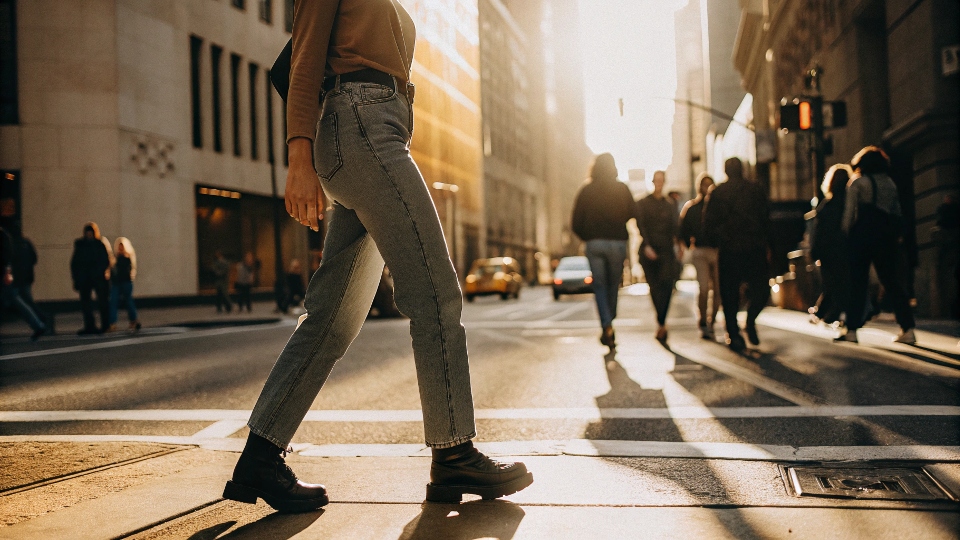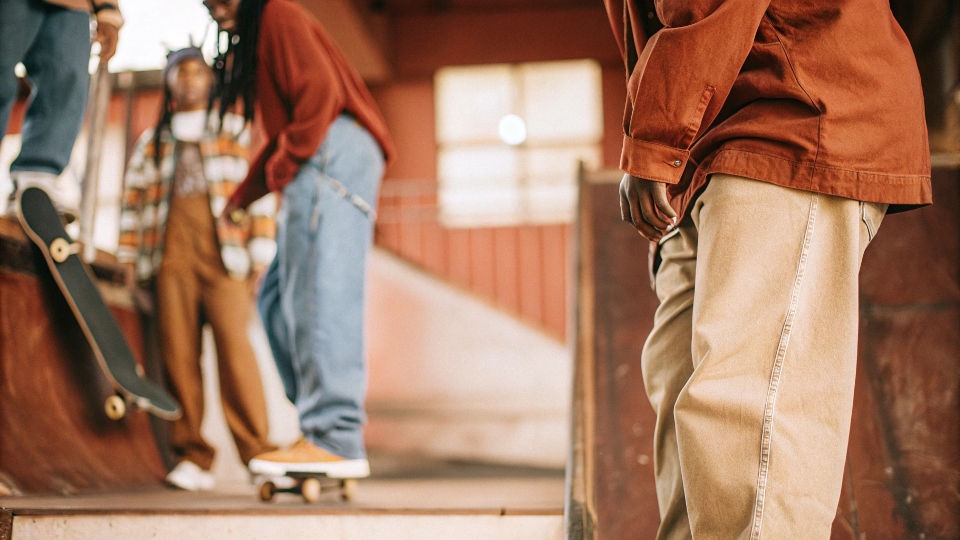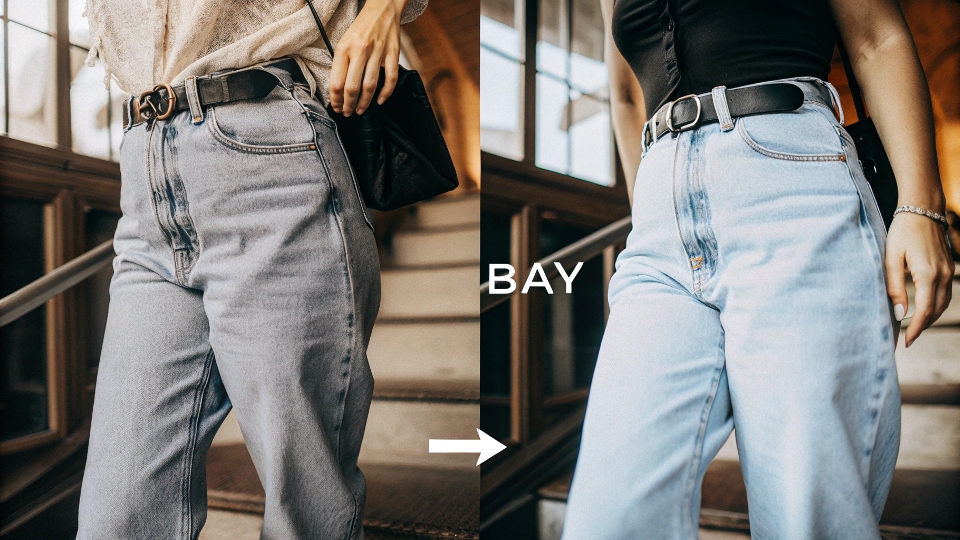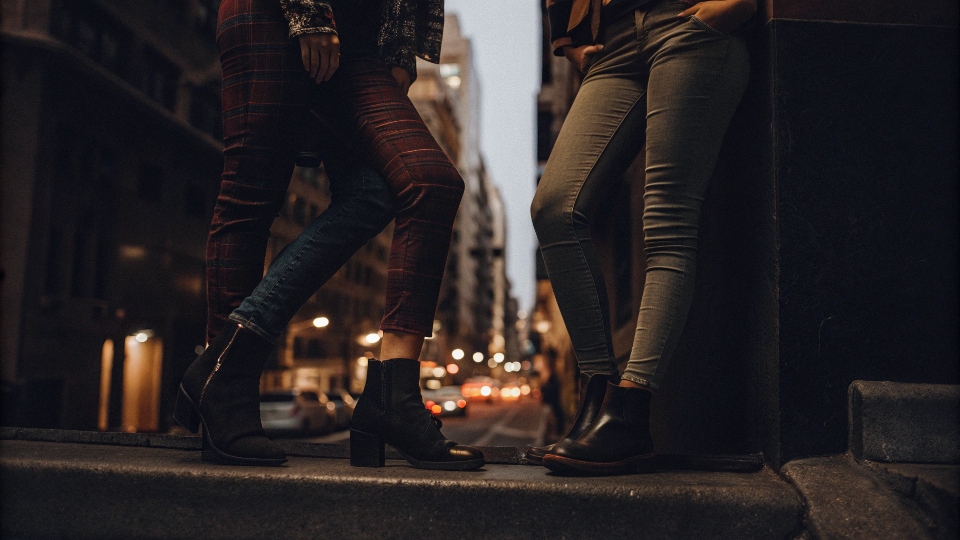You look around and suddenly see baggy jeans everywhere, from the runway to the local coffee shop. You remember just a few years ago when skinny jeans1 were the only style that mattered. What happened?
Baggy jeans surged back into mainstream popularity around 2019, driven by Gen Z on social media platforms like TikTok. The trend became fully mainstream by late 2022, marking a major shift away from the long dominance of skinny jeans.
At my denim factory, DiZNEW, the shift felt like turning a huge ship. For more than a decade, nearly every order was for a skinny or slim fit. Then, around 2018, a few fashion-forward brands started asking for looser patterns2.
By 2020, it was a flood. The insight I read online was spot on; social media3 lit the fuse. In my twenty years in this business, I've learned that denim trends are like a pendulum.
After swinging to one extreme for so long, they always swing back. This time, the swing back to baggy was faster and bigger than I've ever seen before.
When did baggy jeans first become popular?
You see the current baggy trend and it feels new, but you also have a vague memory of it from the past. You're trying to place exactly when this style first had its big moment.
Baggy jeans4 first became a major fashion trend in the late 1980s and exploded in popularity throughout the 1990s. This initial wave was pioneered by hip-hop artists and the skateboarding subculture, who valued comfort and freedom of movement.
While loose-fitting work pants have existed for over a century, the "baggy" jean as a style statement is a product of the 90s. Before that, fits were generally more straight or flared.
I remember being in the early stages of my career and seeing the massive influence of music on denim. Hip-hop artists wore their jeans huge and low-slung, and it became a symbol of rebellion and a specific cultural identity.
At the same time, skateboarders needed pants that wouldn't restrict them, and baggy jeans were the perfect solution.
This created a powerful youth movement. Brands like Girbaud, FUBU, and the infamous JNCO, with its super-wide leg openings, defined this era. The baggy style of the 90s was about more than just comfort; it was a loud and clear statement.
| Decade | Dominant Jean Fit | Key Influences |
|---|---|---|
| 1970s | Bell Bottoms & Flares | Disco, Hippie Culture |
| 1980s | Straight Leg & Acid Wash | Rock Music, Early Hip-Hop |
| 1990s | Baggy & Wide Leg | Hip-Hop, Skateboarding, Grunge |
| 2000s | Low-Rise & Bootcut | Pop Music, Celebrity Culture |
Why does Gen Z wear baggy jeans?
You see young people today embracing this super-loose look. You wonder if they're just copying an old trend, or if there's a deeper reason why this specific style connects with them.
Gen Z5 wears baggy jeans for a mix of reasons: they prioritize physical comfort, enjoy 90s nostalgia, and prefer the style's gender-fluid and body-positive silhouette. It is a direct rejection of the restrictive, body-conscious skinny jean aesthetic.
Talking to younger designers like my friend Dean's interns, I've learned that for Gen Z, this isn't just about fashion. It's about values. First, comfort is non-negotiable for them.
After growing up with athleisure and spending formative years in lockdown sweatpants, they refuse to wear something that feels restrictive. Second, the silhouette is more inclusive.
Baggy jeans fit a wider range of body types without judgment, which is a core part of the body positivity movement. Third, it ties into sustainability. The easiest way to get the look is by thrifting oversized men's jeans from a thrift store, which is a sustainable and affordable choice.
Finally, it's a form of self-expression. They see the skinny jean era as a time of polished, sometimes rigid conformity. The baggy jean is a blank canvas they can use to build a more unique, authentic, and individual look. It’s their style, on their terms.
Why did baggy jeans become popular?
You understand the history and why a specific generation likes them. But you want to know the bigger picture. Why did the entire fashion world suddenly decide to switch from skinny to baggy?
Baggy jeans became popular again due to a natural fashion cycle. After over 15 years of skinny jeans dominating, consumers and designers were ready for a change. The post-pandemic desire for comfort and a new wave of 90s nostalgia6 created the perfect moment for the trend to explode.
From a manufacturing perspective, I live by the fashion cycle. No trend lasts forever. The skinny jean had an incredibly long run, longer than almost any other style in denim history.
By the late 2010s, the market was saturated. Everyone owned multiple pairs. Fashion always needs something new to feel fresh and drive sales. The only place to go from super-tight was super-loose. It's the natural swing of the pendulum.
Then, the pandemic hit. This was a massive accelerator. The whole world stayed home and got used to comfort. When it was time to go out again, people didn't want to squeeze back into tight pants.
Baggy jeans offered the perfect solution: they were stylish and culturally relevant, but they felt as comfortable as the loungewear we had all been living in. It was the right style at the exact right moment.
Did people wear baggy jeans in the 2010s?
You try to remember the fashion of the 2010s, and all you can picture are skinny jeans. You wonder if baggy jeans existed at all during that decade, or if they completely vanished.
No, baggy jeans were not a mainstream style in the 2010s. The decade was completely dominated by skinny and slim-fit denim. While looser fits existed in niche streetwear and skate circles, they were far from popular and considered out of fashion by the general public.
The 2010s were the absolute peak of the skinny jean. At my factory, DiZNEW, our order books tell the story very clearly. From about 2008 to 2018, I would say 9 out of every 10 pairs of jeans we produced were a skinny or slim-tapered fit.
It was a total monoculture. The look was defined by rock-and-roll revival styles, indie music scenes, and later, the polished look of fashion bloggers on Instagram. Everything was about a sharp, narrow silhouette.
A baggy jean in 2014 would have looked as out of place as bell bottoms. Of course, skate culture never fully gave up on their looser fits, but they were a small subculture.
High-fashion designers sometimes showed voluminous pants on the runway, but it never translated to the mall or the street. For the average person, the 2010s were a baggy-jean desert.
Conclusion
Baggy jeans first peaked in the 90s, were replaced by skinny jeans in the 2010s, and made a major comeback around 2019, driven by Gen Z's demand for comfort and nostalgia.
-
Explore the reasons behind the long-lasting popularity of skinny jeans. ↩
-
Learn about the comfort and style advantages of looser clothing patterns. ↩
-
Learn how platforms like TikTok shape the fashion landscape and trends. ↩
-
Explore the latest styles and how baggy jeans are making a comeback in fashion. ↩
-
Discover the cultural and social influences driving Gen Z's love for baggy jeans. ↩
-
Understand how nostalgia for the 90s is influencing today's fashion choices. ↩










